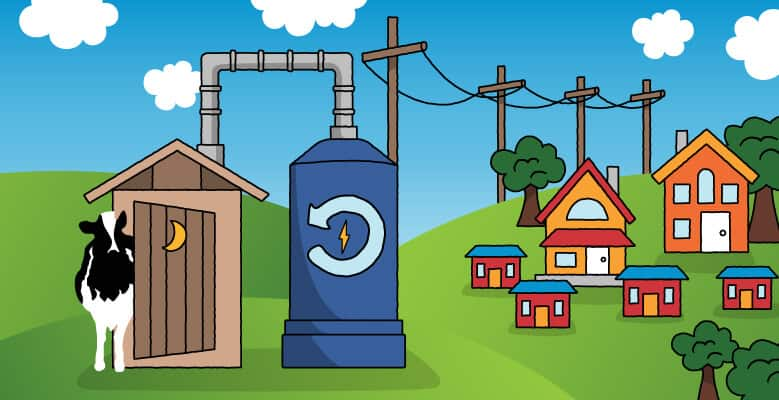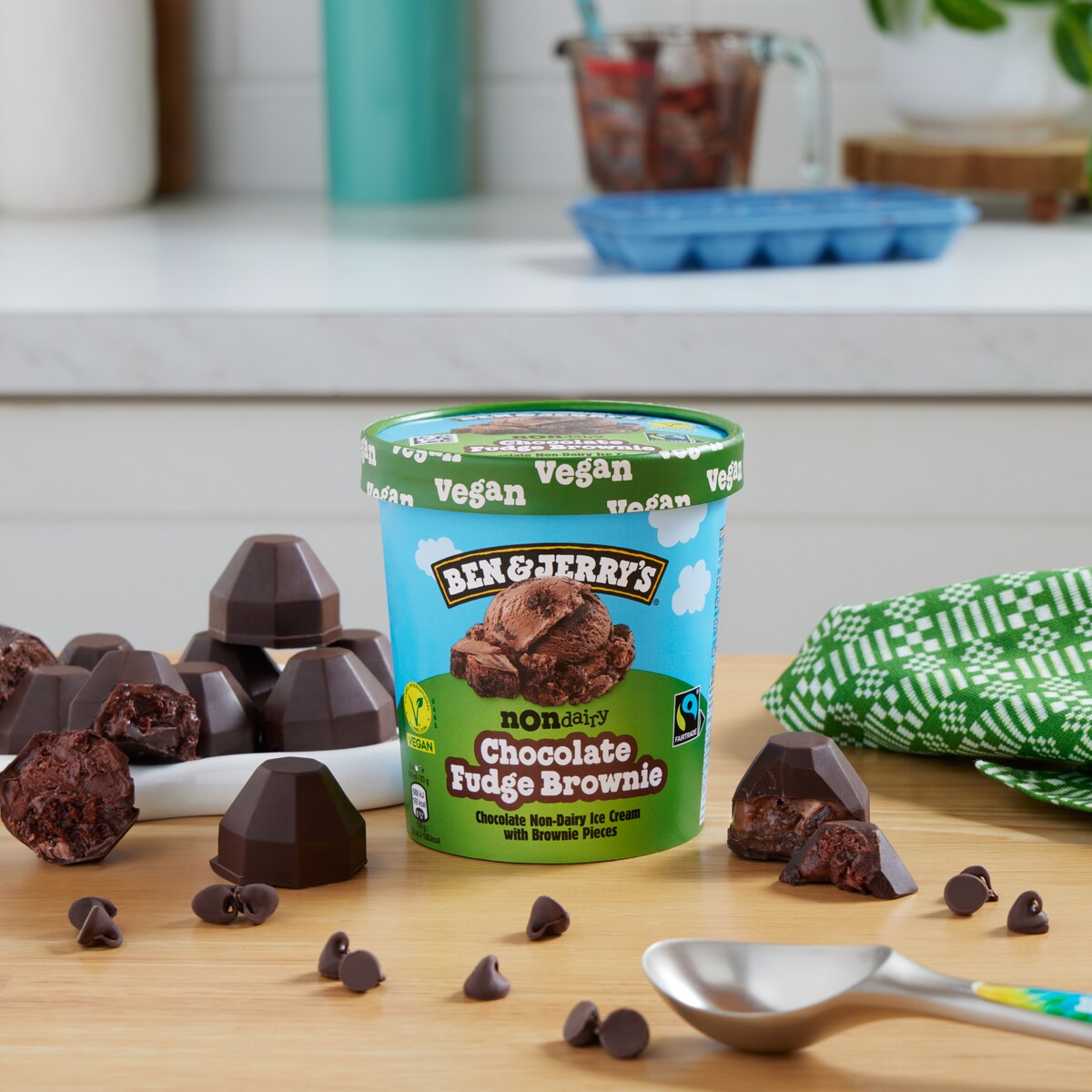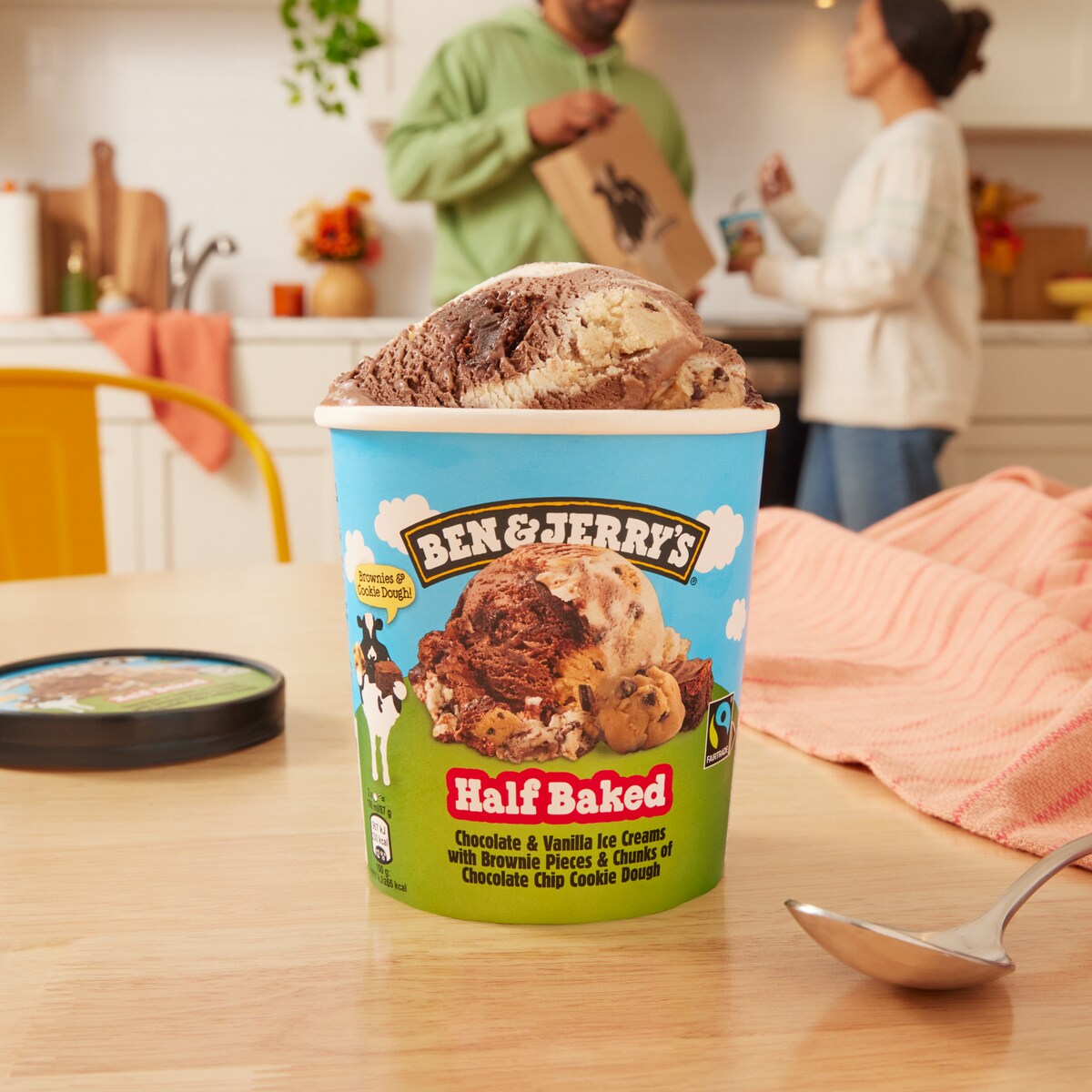
Ice cream: We make it, we eat it, we love it. But we also know that dairy products have a big impact on the environment, which is why we’re doing everything we can to minimise our footprint on the planet we all call home. In this content series, we’ll be highlighting some of the exciting plans we’re implementing to reduce our greenhouse gas emissions and combat the climate crisis.
Dairy accounts for more than half of our total greenhouse gas output, so it’s where we have the biggest opportunity to reduce our carbon footprint. Dairy comes from cows, and cows, for those who haven’t taken a deep breath while visiting a dairy farm recently, produce manure—tons and tons of manure, along with a tremendous amount of climate-warming methane. Manure is one of the largest sources of greenhouse gases on a dairy farm.
Since cows aren’t about to stop pooping anytime soon, we thought to ourselves, is there some way to minimise the impact of this waste on the environment and make use of it as a renewable resource? The answer is yes. Here’s how we’re turning poop into power.
The Lowdown on Manure and Methane
A typical cow produces about 80 lb. of manure each day—multiply that by the number of cows on a farm, and then multiply that by the number of days in a year and you get… a LOT of manure. This manure is often stored before being applied to fields as fertilizer. Manure has two major impacts on the environment. First, it can contribute an excess of nutrients to streams, rivers, and lakes, which can result in algal blooms. Over time, this creates toxic dead zones where there’s not enough oxygen in the water for aquatic life to survive. Second, manure produces methane as it decomposes, and methane is a leading contributor to climate change.
About 20% of the warming our planet has experienced so far can be attributed to methane, which is far more potent than carbon dioxide, over the short term, at absorbing heat. The oil and gas industry is responsible for most of the methane released into the atmosphere, but cows and other ruminants play a significant role.
Cow Power!
Farmers and scientists alike have been aware of these challenges for years and have been working on ways to address them. One solution? A manure digester system, also called an AD (anaerobic digester). Manure digesters break down organic matter, like manure, with microorganisms. A digester acts a lot like a huge industrial version of a cow’s stomach. It heats the manure inside an air-tight tank to about 100˚F, which encourages bacteria in the manure to get to work breaking it down. When the process is done, we get some very useful products:
- Liquid fertilizer
- Solid material that can be used for things like cow bedding
- Renewable energy
Renewable energy? This is the really exciting part: Manure digesters can actually capture methane and use it as a source of electricity and heat or fuel.
The electricity can be fed back into the electric grid and the heat can be used to warm nearby buildings and houses or keep the digester itself warm in colder months. Some digesters can even refine biogas (the name we give to the gas produced by this process) to meet rigorous quality standards so that it can be pumped into natural gas pipelines. Biogas can be further refined to produce compressed natural gas (CNG) or liquified natural gas (LNG), which can be used to fuel vehicles.
What We’re Doing
Think about it: Manure digesters capture methane, keep it from accelerating climate change, and then turn it into a source of clean energy that can be used on-farm or sold to the energy grid (creating an additional revenue stream for farmers). And this technology isn’t just a pipedream: It exists and is being utilised right now on farms all around the world. The challenge is that industrial-scale manure digesters are expensive to install and operate on small or medium-size farms.
Ben & Jerry’s already has two manure digesters up and running on family farms in the Netherlands, converting manure into renewable electricity that’s being used to warm nearby houses. We’re also about to bring a small-scale digester online at a farm in our home state of Vermont, USA. The Vermont digester will:
- Reduce 15,000 metric tonnes of CO2e (carbon dioxide equivalent) over the 20-year lifetime of the equipment. The 15,000 MT is equal to the emissions from 1,687,859 gallons of petrol OR driving an average passenger car 37,697,958 miles.
- Generate 7,000 MWh of new generation over the 20-year lifetime. This is enough to power 597 homes for one year (or about 30 homes a year for 20 years).
Even better, we’ve been partnering with industry experts on a plan to deploy manure digesters that can be run, affordably, on small or medium-size farms. This would change everything. It would open up this climate-friendly technology to farmers who, right now, wouldn’t dream of being able to afford it.
Guided by Our Values
We’re an ice cream company, but we strive to be guided by our values in everything we do. The climate crisis is the single greatest challenge to life on this planet, and we believe that everyone, especially businesses, must do their part to get greenhouse gas emissions under control before it’s too late.
We don’t have all the answers, but we are constantly working with experts and activists to ensure that our business can and will be part of the climate solution. By approaching our dairy business with new thinking and innovative ideas, we will be able to reduce our greenhouse gas emissions and minimize our impact on the environment. The idea of turning waste into a resource gives us a lot of hope.
Next time, we’ll dig into more ways that Ben & Jerry’s is combating the climate crisis. Join us then.


